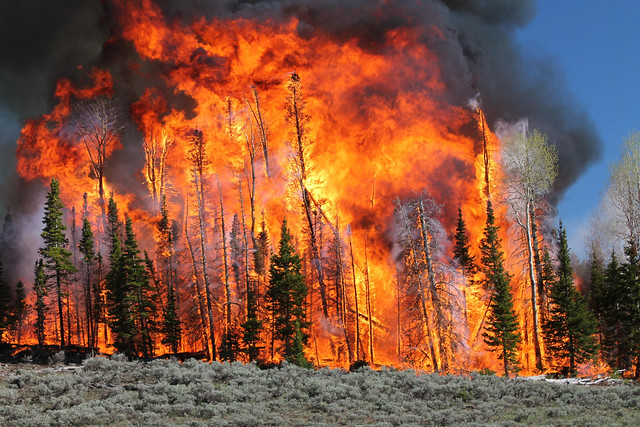Global Drylands Expand by 4.3 Million Square Kilometers, Affecting Billions of People, Warns UNCCD Report
A startling new report from the UN Convention to Combat Desertification (UNCCD) has revealed alarming trends in the global climate, with more than 77 percent of Earth’s land experiencing drier conditions during the last three decades. The report, launched during the 16th UNCCD conference in Riyadh, Saudi Arabia, underscores the growing crisis of drylands expansion and aridification across the planet.
The report highlights a dramatic increase in global drylands, which expanded by 4.3 million square kilometers between 1990 and 2020—a vast area approximately one-third larger than India. Today, drylands now cover more than 40 percent of Earth’s land, and if current climate trends continue, these areas will expand further, potentially affecting billions more people in the coming decades.
The Growing Threat of Climate Change and Drylands Expansion
The report warns that if efforts to mitigate greenhouse gas emissions fail, another 3 percent of the world’s humid areas could transform into drylands by the end of this century. This shift is expected to worsen the impact of desertification, a process that causes land to lose its productivity and become increasingly barren.
Over the last 30 years, the number of people living in drylands has doubled to an estimated 2.3 billion, and this figure is projected to rise dramatically. Climate models suggest that in a worst-case scenario, as many as 5 billion people could inhabit drylands by 2100, adding severe pressures on already vulnerable regions.
According to the UNCCD, the impacts of these changes are far-reaching, affecting human health, livelihoods, and biodiversity. The report stresses the urgency of addressing the aridification and desertification trends, which are causing permanent shifts in the planet’s climate and threatening global food security and water availability.
Areas Most Affected by Drying Trends
The report identifies several key regions that have already been severely impacted by the trend of global drying:
- Europe: Nearly 96 percent of the continent is facing worsening dryness, with Mediterranean countries suffering the most.
- The Western United States: Ongoing droughts and desertification are exacerbating conditions in this region.
- Brazil and Asia: Parts of South America and Asia are experiencing significant expansion of drylands, worsening food insecurity.
- Central Africa: Countries in this region are experiencing severe desertification, impacting both local populations and ecosystems.
Key Findings: Rising Dryland Populations and Future Projections
The UNCCD report also points out the concentration of people living in drylands, with over half of the world’s dryland inhabitants located in Asia and Africa. Notable regions include:
- California and Egypt in North Africa
- Pakistan, India, and China in Asia
The most densely populated drylands are found in parts of India, Pakistan, China, and Egypt, where millions of people already face the challenges of living in increasingly arid conditions. In these regions, both water scarcity and land degradation are intensifying, putting further strain on communities and local economies.
Looking ahead, the report warns of the potential future expansion of drylands under high-emission climate scenarios. The Midwestern United States, central Mexico, and large parts of South America, southern Africa, and southern Australia are expected to experience increased aridity. Additionally, the Mediterranean region, Black Sea coast, and parts of Asia will likely see even more severe desertification if current trends continue.
An Existential Threat to Human Life and Ecosystems
Ibrahim Thiaw, Executive Secretary of the UNCCD, described the report’s findings as a wake-up call: “For the first time, the aridity crisis has been documented with scientific clarity, revealing an existential threat affecting billions around the globe.” He emphasized that while droughts are temporary periods of low rainfall, aridity represents a permanent transformation of the landscape.
“Droughts end. When an area’s climate becomes drier, however, the ability to return to previous conditions is lost,” Thiaw stated. This shift is irreversible, making sustainable land management and climate action critical to mitigating the long-term effects of desertification.
The Role of International Collaboration in Combating Desertification
The UNCCD continues to push for global action to curb desertification and enhance climate resilience. The UNCCD conference in Riyadh brought together representatives from governments, NGOs, and other stakeholders to discuss strategies to combat land degradation and implement policies aimed at restoring the health of drylands.
Efforts to curb desertification involve increased funding for sustainable land management practices, investing in soil restoration, and supporting vulnerable populations through better climate adaptation strategies.
A Call for Immediate Action
The findings of the UNCCD’s 2024 report underline the urgent need for climate action to prevent the irreversible spread of drylands and aridification. Without significant changes in global emissions and land management, the world faces a future where nearly half of the global population could be living in increasingly uninhabitable drylands by the end of the century.
As the report states, the aridity crisis is no longer a distant threat—it is a present reality. Immediate action to mitigate climate change, restore ecosystems, and support resilient agricultural practices is essential to safeguard the future of our planet’s most vulnerable regions.

